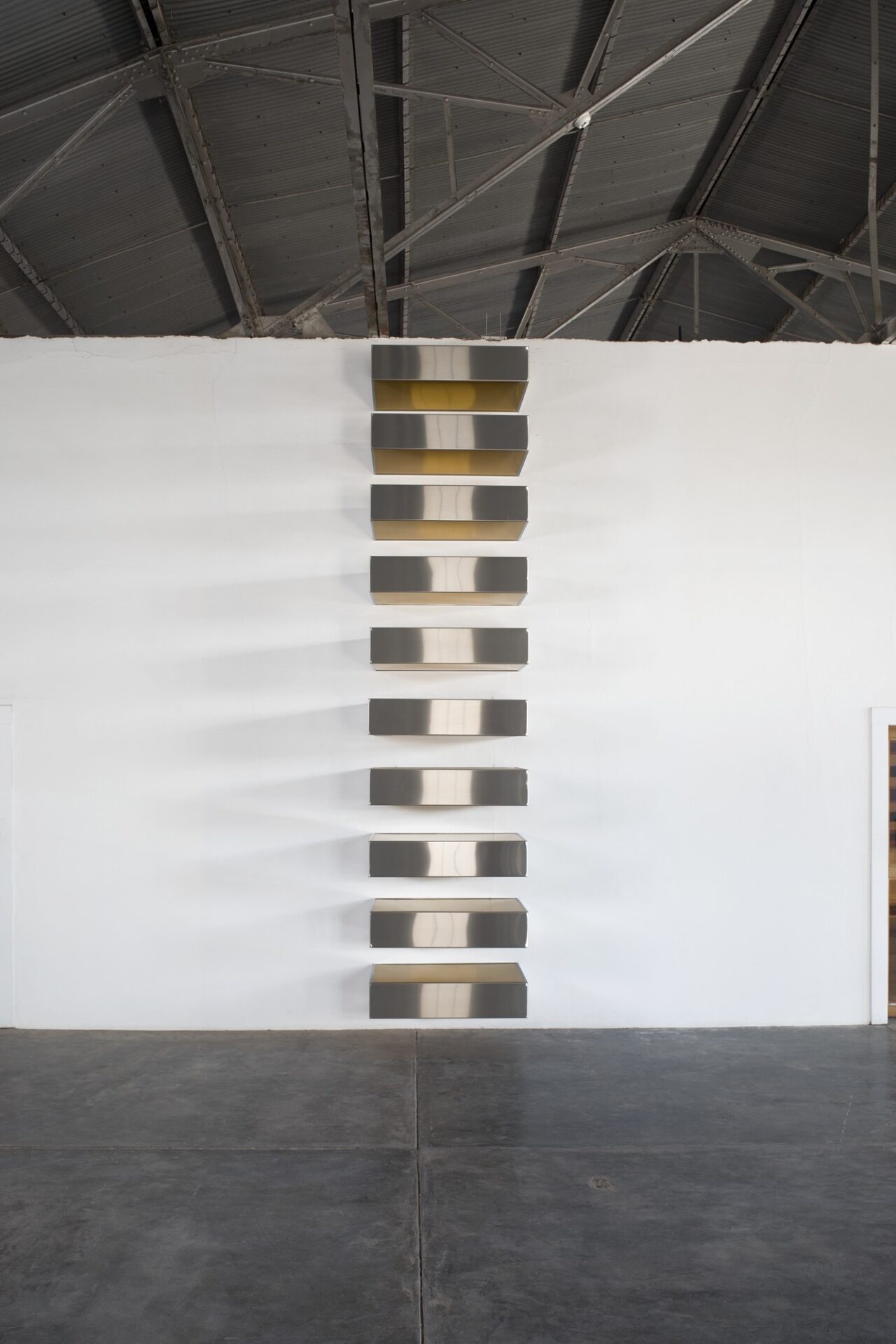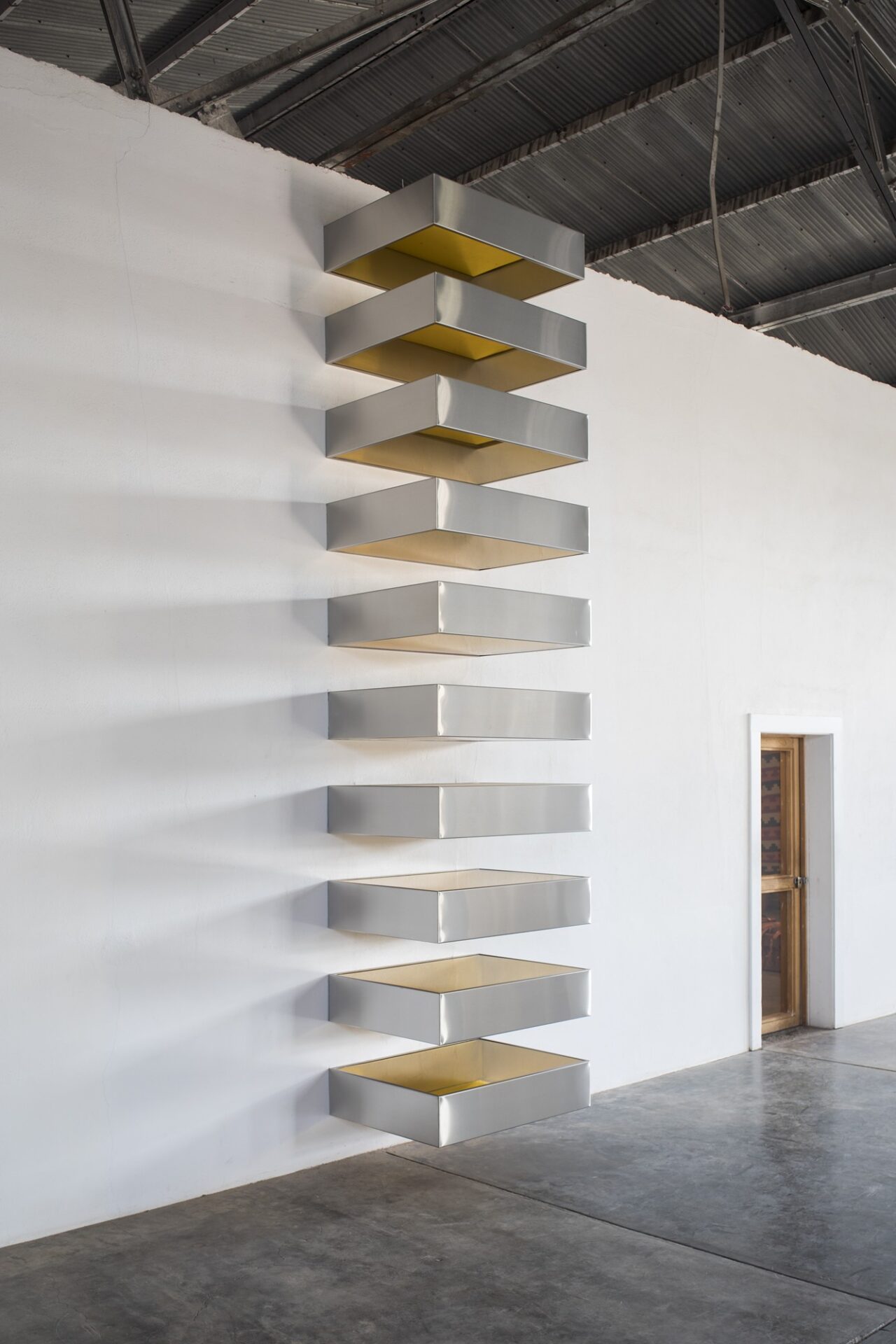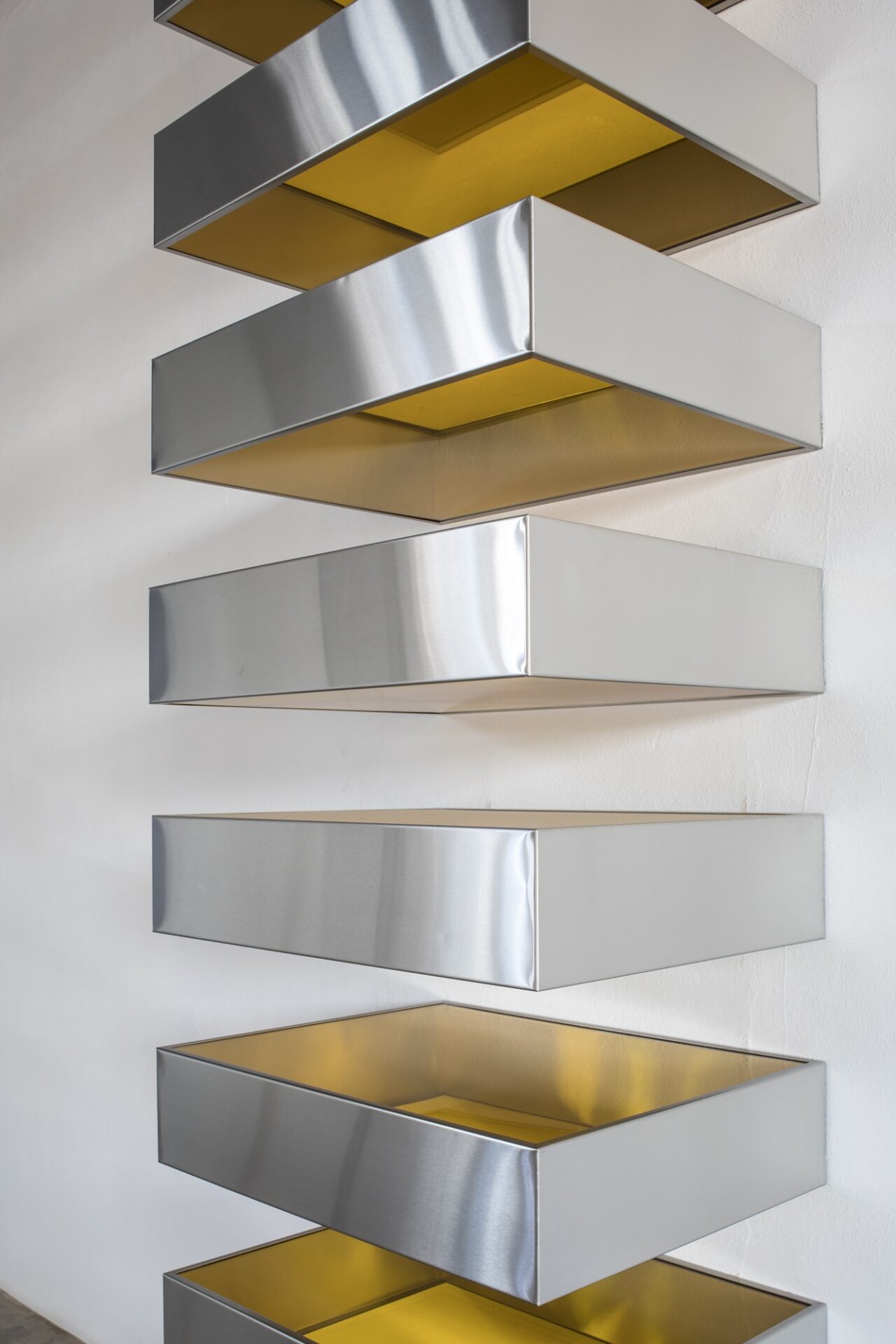With few exceptions, works of this kind, referred to by Donald Judd’s studio as “stacks,” were made in ten units. These works are installed so that the volume of each unit and that of each interval between them are equal, ideally spanning the full height of the wall.
Judd installed three stacks in the north room in the east building at the Block. The stack format allowed for a number of combinations, including a single metal on all sides, referred to as “solid”; those with plexiglass on the top and bottom; and those with metal on the top and bottom and plexiglass on the three facing sides, referred to as “wraparound.” All units in a stack are uniform in their appearance. The dimensions of all three stacks at the Block make them “large” stacks, while the units in a “small” stack measure six by twenty-seven by twenty-four inches and can be installed on shorter walls.
This work is an early stack made with plexiglass on the top and bottom of each unit, so that the interior of each element and the space between them is open and visible. Judd considered the proportions of each unit: “They shouldn’t come out too far in relationship to the width, and I didn’t want any kind of engineering problem. . . . I don’t like any dramatic quality or incident or anything archaic. The boxes just hang on the wall in a practical manner.”1


